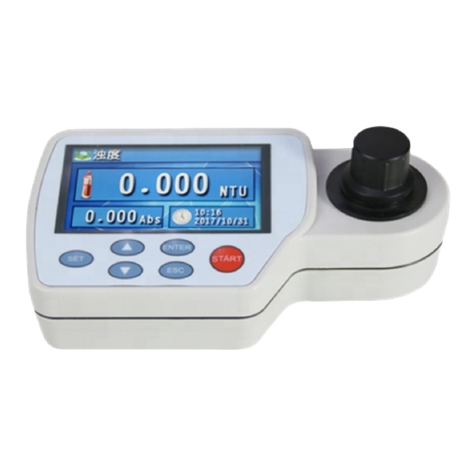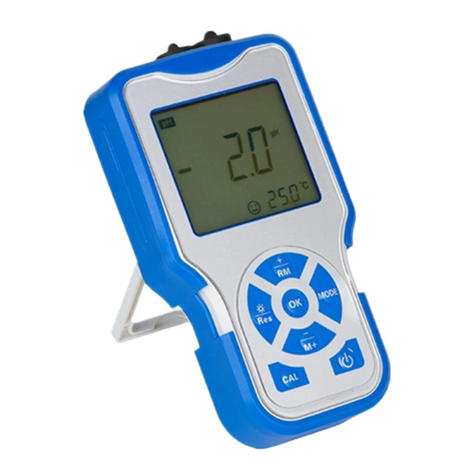
1. Brief Introduction:
Thanks for buying and using the model P611 pH/mV Meter (the following called “meter”in
short).
Before using this meter, please read the operation manual carefully in order to help use and
maintain it correctly. On the basis of improving instrument of performance constantly, we
reserve the right of changing the content of this manual and accessories in case of not
notifying in advance.
This meter is a perfect combination with the most advanced electronic technology, sensor
technology and software design The meter can measure the parameters of pH, mV and
temperature for high accuracy solution. It is the best portable pH meter with the highest
performance and the lowest cost. It is suitable for the trade such as the mining industry,
power plant, water treatment projects and environmental protection, etc., especially has
more extensive application in the field and spot test.
Built-in microprocessor chip, beautiful appearance, multi-functional and easy to use, this
meter has the following prominent features:
1.1. Built-in microprocessor chip, with the intelligent functions of automatic calibration,
automatic/manual operation temperature compensation, data storage, function setting
and automatic self-diagnose, auto power off and low voltage display etc. Equips with
calibration solution and special carrying case, easy to use.
1.2. Adopts digital filter and step slipping technology to intelligently improve meter’s
response speed and result accuracy. “ ” will appear when reading to be stable.
1.3. A new type of pH meter electrode and temperature electrode,the pH measurement
mode has the function of automatic temperature compensation ,it is more convenient
to use, more accurate to measure.
1.4. Automatically recognize 15 kinds of pH standard buffer solution. User can choose
anyone from three series of buffer solutions: Europe & U.S.A. series, NIST series, and
China series,can be a point, two and three points to calibrate the way to facilitate
customer selection.
1.5. Meter’s circuit board adopts SMT film-covering technology to improve meter’s
production reliability.
1.6. Meter has the back light LCD display monitor.
1.7. IP54 dust and water resistant.





























